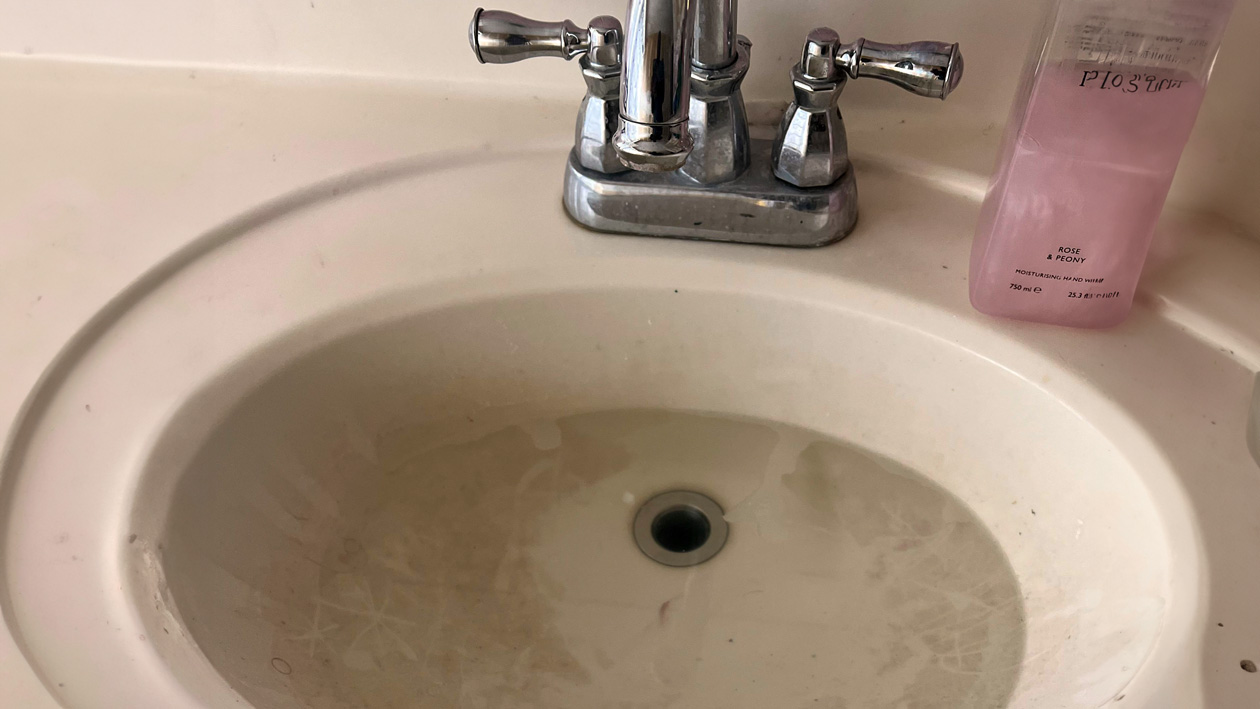If you’re staring at that stubborn pool of water that just won’t budge, you’ve come to the right place. Blocked bathroom sinks are one of the most common household plumbing issues, and the good news is you can usually fix it yourself. We’ll step you through it in plain English. Let’s get your bathroom sink flowing again!
In this guide:
- The Hot Water Method – Quick and Easy
- The Magic Baking Soda and Vinegar Trick
- When Hair is the Culprit
- The Plunger Method
- Plumber’s Tip: Shop Vac/Wet-Dry Vacuum Method
- Going Nuclear: Removing the P-Trap
- How to Unblock a Bathroom Sink U Bend
- The Professional Arsenal
- What Not to Do
- Prevention is Your Best Mate
- When to Call the Professionals
The Hot Water Method – Quick and Easy
Before you start dismantling anything, try the hot water method. It’s dead simple and works surprisingly well. Fill your kettle, bring it to the boil, then let it cool just a touch so you don’t crack your pipes if they’re PVC. Pour that hot water straight down the blocked drain from a good height – the force and heat can break down soap scum and minor blockages.
The Magic Baking Soda and Vinegar Trick
This is the method I swear by, and it’s worked wonders in my experience dealing with countless blocked sinks over the years. Mix one-third cup of baking soda with one-third cup of vinegar. The mixture will start fizzing immediately – that’s the chemical reaction doing its magic. Pour it straight down the drain, let it sit for about an hour, then flush with hot water.
For tougher blockages, add half a cup of salt to the baking soda before adding the vinegar. The salt’s abrasive nature helps break down stubborn clogs that have been building up over time.
When Hair is the Culprit
Let’s be honest – hair clogs are the bane of bathroom sinks. They are also one of the most common reasons for blocked drains. You’ve got a few options here. If you can see the hair mass, grab some tweezers or needle-nose pliers and pull that gunky mess out. Wear gloves – trust me on this one.
Alternatively, straighten out an old wire coat hanger and bend one end into a hook. Remove your drain stopper and fish around for the blockage. You might be surprised at what you pull out – and equally disgusted!
The Plunger Method
Here’s where many people go wrong – you need to use a cup plunger, not a toilet plunger. Make sure there’s enough water in the sink to cover the plunger head, create a proper seal around the drain, and give it some good, firm pumps. The suction should help dislodge whatever’s causing the blockage whether it be in your bathroom sink or shower drain.
Plumber’s Tip: Shop Vac/Wet-Dry Vacuum Method
Here is one expert plumbers tip for you, use a shop vac to suck out clogs. This technique works particularly well for hair clogs and foreign objects stuck in the P-trap. Here’s how to do it:
- Use a wet-dry vacuum with at least 5-6 HP and a 2-inch diameter hose
- Press the hose firmly against the drain to create an airtight seal
- Wrap a wet towel around the hose and drain to improve the seal
- Block the overflow drain with a wet rag if your sink has one
- Add some water to the sink for better suction
- Start vacuuming – you may need to empty the tank multiple times
For even better sealing, use a duct seal (electrical conduit sealer) around the vacuum hose end. This grey, putty-like material creates an excellent seal and can be easily removed afterward.
Going Nuclear: Removing the P-Trap
When all else fails, it’s time to get under the sink and tackle the P-trap – that U-shaped pipe underneath. Don’t worry, it’s not as scary as it sounds. Place a bucket under the P-trap first – you’ll thank me later when you’re not cleaning water off your bathroom floor.
Use some pliers to loosen the slip joint nuts on both ends of the trap. Once you remove it, you can clean out all the gunk that’s been accumulating in there. It’s messy work, but incredibly satisfying when you see all that debris that was blocking your drain.
How to Unblock a Bathroom Sink U Bend
- Gather your tools – You’ll need adjustable pliers or a wrench, a bucket, and possibly a wire coat hanger or bottle brush for cleaning.
- Place a bucket underneath the U-bend – Position it directly under the curved P-trap pipe to catch any trapped water and debris that will spill out.
- Locate the slip joint nuts – Find the nuts on both ends of the curved U-bend pipe that connect it to the straight pipes above and below.
- Loosen the slip joint nuts – Use your adjustable pliers or wrench to carefully loosen both nuts by turning them anticlockwise. Be prepared for water to start dripping.
- Remove the U-bend – Once the nuts are loose, gently slide the curved pipe section down and away from the connecting pipes. More trapped water and debris will flow out at this point.
- Clean out the blockage – Use a wire coat hanger or bottle brush to remove any hair, soap scum, or debris stuck inside the U-bend. Rinse it thoroughly with water.
- Inspect the washers and gaskets – Check the rubber seals for any damage, cracks, or wear that could cause leaks when reassembled.
- Reassemble the U-bend – Slide the clean trap back into position and hand-tighten the slip nuts first to ensure proper alignment.
- Secure the connections – Use your pliers to firmly tighten both nuts, but don’t over-tighten as this could crack the pipes or damage the threads.
- Test for leaks and drainage – Run water through the sink to check that it drains properly and that there are no leaks at the connections you’ve just reassembled.
The Professional Arsenal
If you’re dealing with persistent hair clogs, consider investing in a drain snake or “drain weasel”. These flexible plumbing tools are designed specifically for this job and can reach deeper into your pipes than a coat hanger ever could. You simply insert the snake, twist it around to grab the blockage, then pull it out.
What Not to Do
Here’s some hard-earned wisdom from years in the industry: don’t rely solely on chemical drain cleaners. Sure, they might provide a quick fix, but they can damage your pipes over time and are harsh on the environment. Plus, they often don’t solve the underlying problem – they just push it further down the line.
Also don’t put coffee grounds down drains – they create cement-like clogs when they dry!
Prevention is Your Best Mate
Install drain covers or strainers in your bathroom sink. These little mesh screens catch hair and debris before they become a problem. Clean them regularly, and you’ll save yourself a lot of grief down the track.
Also, give your drains a weekly clean with that baking soda and vinegar mixture – even when they’re not blocked. Think of it as maintenance rather than repair work.
When to Call the Professionals
Look, I’ve been dealing with blocked drains for decades, and I’ll tell you straight up – if you’ve tried these methods and your sink is still not draining properly, it’s time to call a plumber. Sometimes the blockage is deeper in the system, or there might be a more serious issue with your pipes that needs professional attention.
Don’t feel defeated if you can’t fix it yourself – some blockages are just beyond what household remedies can handle. Professional plumbers have specialised equipment like hydro-jetters and drain cameras that can tackle problems you simply can’t reach.
Remember, your time is valuable too. If you’ve spent half your weekend wrestling with a stubborn blockage, sometimes it’s worth paying for professional help rather than continuing to battle it yourself.
The key is knowing when you’ve reached your limit and being smart about it. A good plumber will not only fix the immediate problem but can also give you advice on preventing future blockages – and that knowledge is worth its weight in gold.



